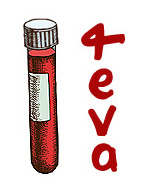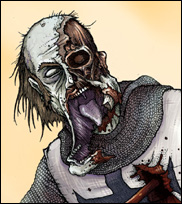“The conquistadors, the men of Estradamura that you write about in A Sickness of the Heart and Our Captain, the fact that hundreds defeated hundreds of thousands in Mexico and Peru isn’t that evidence of a superiority? I just don’t buy that it was all disease. Even if 95% died off the conquistadors are still outnumbered a hundred to one.”
-Manny
________________________________________________________________
This is probably the best case to be made for a martial superiority operating in or through European man—specifically, I will say Arуan, not the broader Caucasian diaspora of races, but the language-traced Indo-Europeans—the heroic races exhibiting apex pack behavior in war only equaled by North Asian races of nomads sprung from the very same steppes habitat.
The Aztecs were besieged and in crisis, having lost their entire empire before the small pox killed 9 in 10 of them. So you are correct, this was not a win by disease but by deed. What did them in, primarily—and Barbara Tuchman in her March of Folly makes the best case for this—was their excessively CIVILIZED and fatalistic slave mind set, which had the entire nation acting in slavish obedience to a superstitious fool, Montezuma. As Bernal Diaz relates, their city was the greatest in the world surpassing any in Europe in all ways, from sanitation to food distribution to obedience to the law. All of this contributed to their fragility in the face of the Barbarian invaders, who fought over who was to be their leader up until the time of battle. Cortez usurped the leadership of the expedition.
Secondarily, the Aztecs had embarked on the folly of empire, enchaining slave races to their cruel will, races all too ready to ally in their hundreds of thousands with Cortez.
Now to the Incas, in which even fewer Arуan Barbarians took down an empire many times more powerful than the Aztecs. The Incas had bronze axes, maces and flails and stone weapons which defeated Spanish helmets. One Inca detachment even defeated a Spanish force in a fairly even battle. Again, the slave mind of a people whose king was a living god defeated the Incas, even as their vast army, which would have slaughtered the Aztecs and was organized much like the Roman Legions, stood obediently outside of the city where their fool leader and all of his officers agreed to meet unarmed with the 150-odd armed invaders. They never imagined that 150 armed men would kill all 20,000 of them [this in itself indicating a lack of heroic mindset] as their leaderless slave army watched from the surrounding hills. To their credit, the Incas, having already suffered heavy disease losses before the encounter through third-party contact, fought on for 40 years. However, their imperial system turned on them as the Spaniards used their road networks and stone fortress cities and recruited allies from their subject peoples. Agriculturally, the Incas were the most advanced civilization on earth at this time, but militarily they were barely into the Bronze Age. However, there have been studies done showing that they could have easily won and kept the Spaniards at bay while reverse engineering technology and using captive Spaniards as craftsmen much like the Japanese did hundreds of years later.
What really killed the Incas was that they had homogenized their people to a degree not seen until postmodern America, forcing tribes to give up their identity and moving them to alien places, enforcing communal food distribution, and finally softening to the point where they were unable to conquer the barbarian peoples to north, east and south. As with Rome before the Germans and Persia before the Macedonians, and then America before the drug cartels with its interstate system after, the centralized nature of the empire and the highly developed road network, blessed their invaders with godspeed.
But these incidences were only partially a lost defense and very much a gained conquest. The Barbarian invaders had one thing the Civilized Incas did not, a heroic ethos, which gave their enemies no rest as the Pizarro Brothers and the ruthless Soto descended on the faltering empire [already in the midst of a plague and a civil war] like wolves on sheep, which are what barbarians are to disorganized civilians.
Where Athaluppa sat stoically at Cajamarca and was burned to death in the very fire that melted down his sacred relics into bullion, even though he could have called in his armies to kill the invaders as he burned, not many years later we are related to an example of how Pizarro, his conqueror, behaved in the every same circumstance, when surrounded by Barbarian cutthroats. In the land of the Inca, not so far from where Athalupa died stoically as an ascendant Sun God, Pizarro and his assistant were attacked by five armored conquistadors while wearing only clothes and swords. While his secretary groveled, Pizarro cursed him and his assassins, tore a drape from the window as a shield, and well into his sixties, took some of his killers to hell with him.
What doomed the Incas is they were too civilized and this was permitted by an erasure of the heroic—if indeed they ever had a heroic ideal—from their martial culture. The heroic ideal did rise up [or reemerge] in the form of renegade Incas as a result of this cultural clash, but too little and too late.
The perfect counterpoint to these two civilizations being failed by their leaders and failing to rise up as a people, but remaining slaves to the alien invader to this day, is found in the Anabasis of Xenophon, or The March-down-to-the-sea. When the 10,000 leaderless Greek mercenaries sat by under orders while their leaders were murdered at a parley with the Persian army which vastly outnumbered them, the Greeks simply elected new leaders and fought their way free. Had the Inca army outside Cajamarca been made up of ancient Greeks the Spaniards would have been butchered that afternoon. It was the Anabasis which convinced Alexander that Persia was ripe for the picking.
The behavior of Conquistadors was that of independent rogue operators, often criminals in a state of disobedience to their government handlers, a shining half-century in masculine history when men reverted to the ancient Homeric ideals of heroism, cunning in the face of an alien foe and brutal natural selection among themselves to determine who was fit to lead the small barbarian pack in its descent on the soft, degenerate fold of Civilization, with its quivering neck bared to the ever-reoccurring cycle of cleansing barbarism that remains humanity’s last hope.
Our Captain: A Sickness of the Heart-Part Two: The Expedition Of Juan De Grijalva
A Sickness of the Heart: Part One: The Blood Gods and The Sunrise Serpent: An Adaptation of Bernal Diaz' The Conquest of New Spain - The Expedition Of Francisco Hernandez De Cordoba











James:
Thank you for your thoughtful response to my question. As we have seen just recently with the French boxer/International hero Christophe Dettinger, it seems the Arуan warrior still lives.
Truth be told, I would sell my mother into white slavery to ride into battle with Soto and the Pizzaro brothers again and put the sword to our enemies.
Best regards,
Manny.
A lucid telling of the processes which have allowed America and her captive cousins to be so primed for conquest: evoandproud.blogspot.com/2019/01/demise-of-west.html?m=1
How do you figure the Inca were the most agriculturally advanced?
More varieties of potatoes and maize than are currently in use today.
Fed more people than any European nation until the 1800s.
Like the ancient Romans had better water and sanitation than any place in Europe until the 1800s.
Terracing rivaled only by the Chinese and Japanese.
Fed a larger army than any European military until the late 1700s—actually fed them, didn't send them out pillaging like Napoleon did.
Developed frozen food stores, including freeze-dried potatoes.
Lima beans.
Maybe there is a reason why Peruvian kids do so well in math competitions.